Almond Rice Flour Muffins
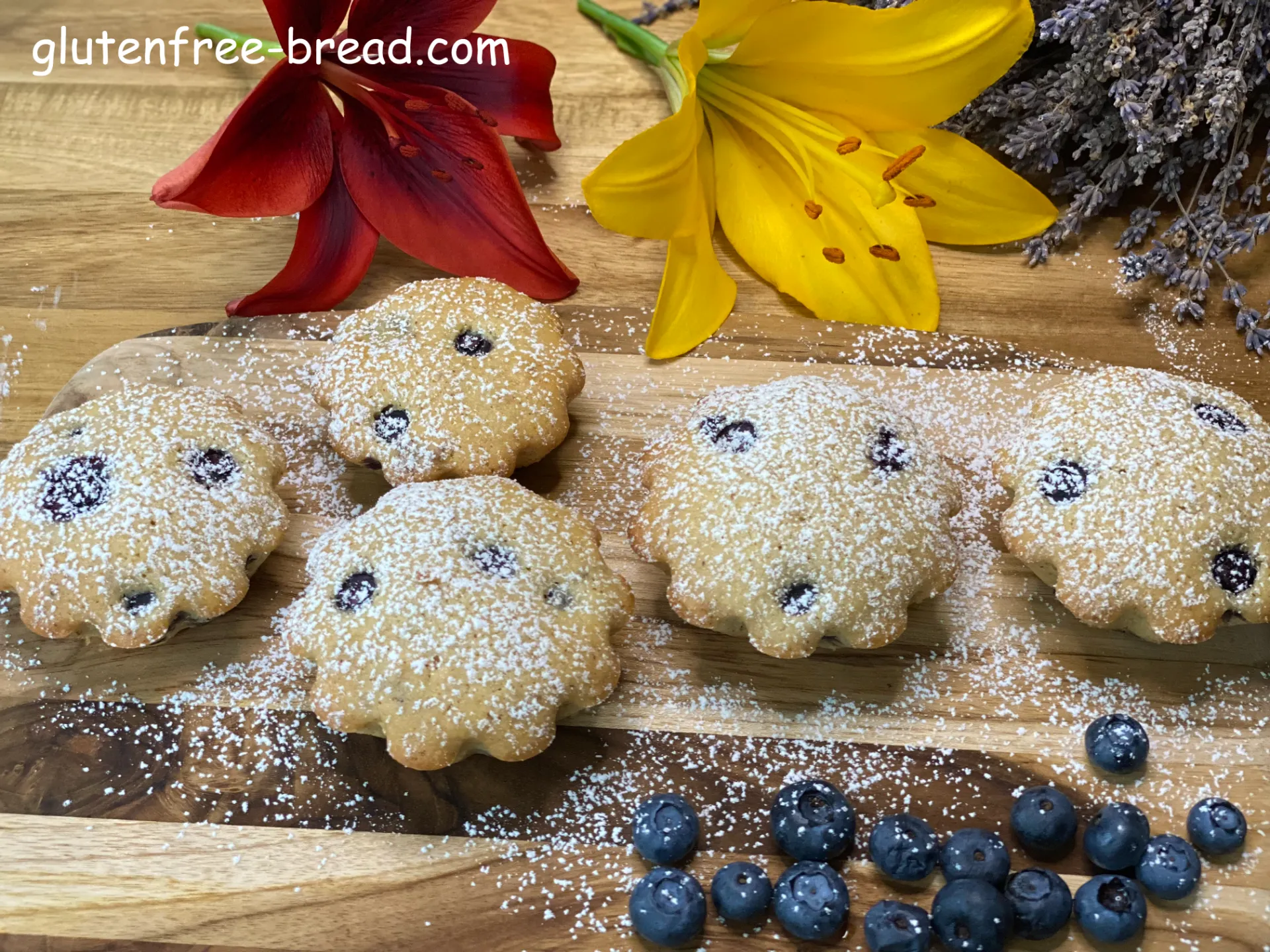
Ingredients:
| Name | Metric | US | TIP | |
|---|---|---|---|---|
| Almond Flour | 120 gr | 1 1/4 cups | ||
| Rice Flour | 100 gr | 1 cup | ||
| Almond Butter | 40 gr | 1/4 cup | ||
| Milk | 50 ml | 1/4 cup | ||
| Powdered Sugar | 110 gr | 1 cup | ||
| Eggs | 4 | 4 | ||
| Baking Powder | 6 gr | 1 teaspoon | ||
| Sare | 3 gr | 1/2 teaspoon | ||
| Vanilla Extract | 6 ml | 1 teaspoon |
Optional Ingredients :
| 1/4 cup Chopped Nuts | |
| 35 gr / 1/3 cup Blueberries | |
| 35gr / 1/4 cup Raspberries | |
| 60gr / 1/3 cup Chocolate Chips |
Equipment:
| Blender, or immersion blender | |
| Muffin Tray |
Steps:
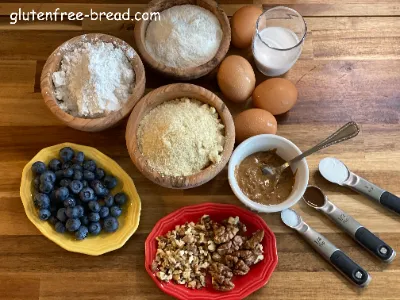
Step 1

Step 2

Step 3
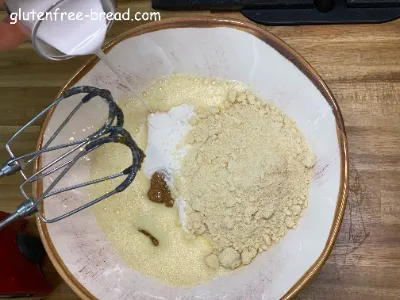
Step 4

Step 5

Step 6
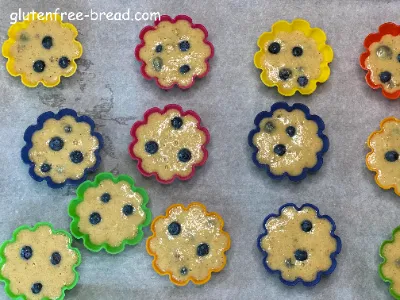
Step 7

Step 8
Notes:
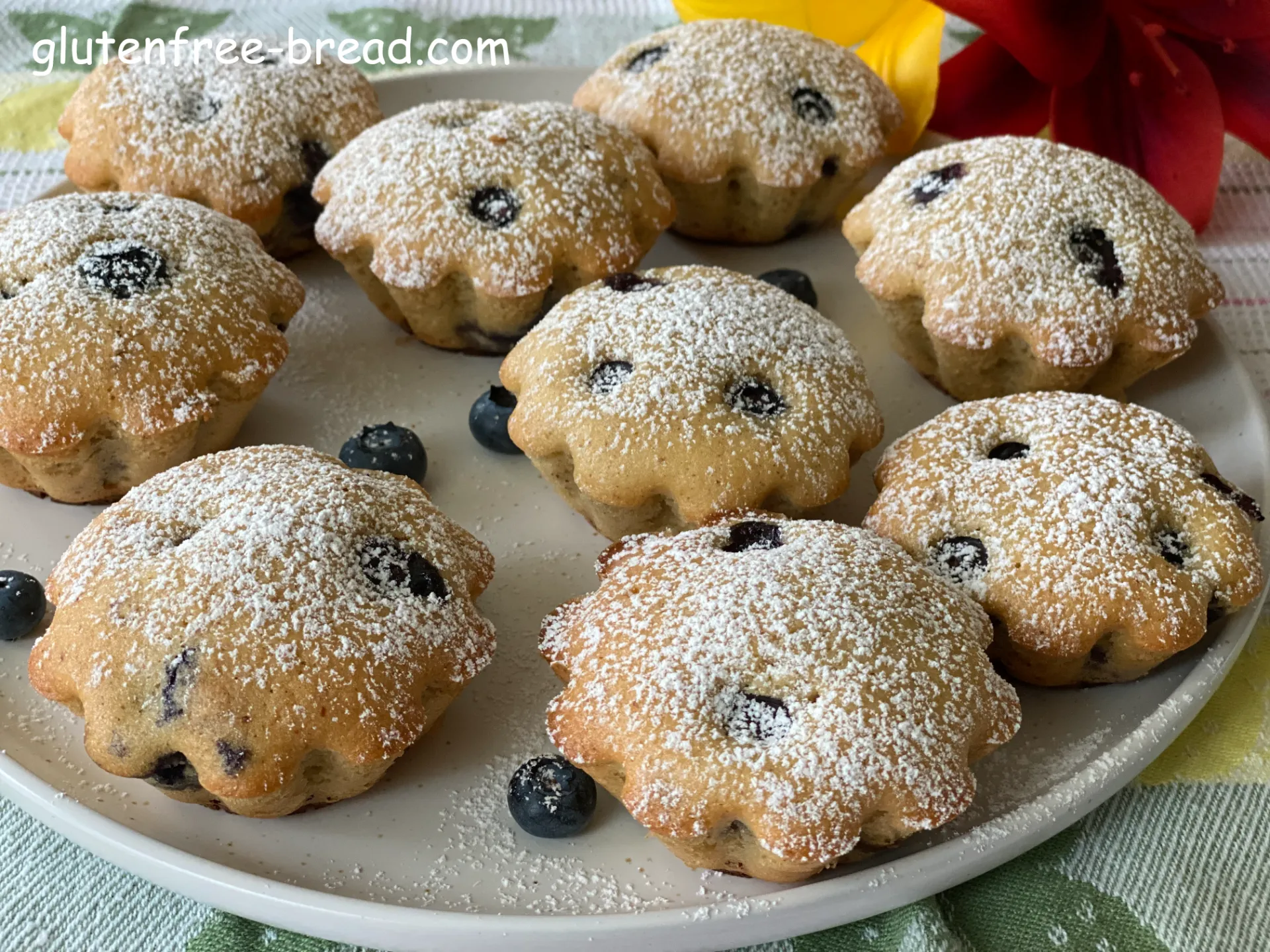
Almond Rice Flour Muffins
Here are some tips to ensure better outcomes when baking muffins:
Use Room Temperature Ingredients: Bring ingredients like eggs, milk, and butter to room temperature before mixing. This helps them blend together more smoothly and evenly.
Measure Ingredients Accurately: Use a kitchen scale for precision, especially with dry ingredients like flour. Accurate measurements ensure the right balance of ingredients for optimal texture and flavor.
Don't Overmix the Batter: Overmixing can lead to tough or dense muffins. Mix until ingredients are just combined; a few lumps in the batter are okay.
Preheat the Oven: Make sure your oven is fully preheated before baking. This ensures that the muffins rise properly and bake evenly.
Fill Muffin Cups Correctly: Fill muffin cups or liners about two-thirds full. This allows the muffins to rise without overflowing.
Check for Doneness: Use a toothpick inserted into the center of a muffin to check for doneness. It should come out clean or with a few moist crumbs, but not wet batter.
Cooling Properly: Allow muffins to cool in the pan for a few minutes before transferring them to a wire rack to cool completely. This prevents them from becoming soggy on the bottom.
Storage: Store muffins in an airtight container at room temperature for up to a few days, or freeze them for longer storage. They can be reheated gently in the microwave or oven before serving.
Experiment with Flavors: Feel free to add mix-ins like nuts, fruits, or chocolate chips to customize your muffins. Just be mindful not to overload the batter, which can affect baking results.
By following these tips, you can achieve delicious, fluffy muffins with a perfect texture every time you bake!
Almond Rice Flour Muffins additional information:
Almond flour, made from finely ground almonds, has several benefits and considerations to keep in mind:
Benefits:
Gluten-Free: Almond flour is naturally gluten-free, making it suitable for individuals with celiac disease or gluten sensitivity.
Nutrient-Dense: Almond flour retains the nutritional benefits of almonds, including healthy fats, protein, fiber, vitamins (especially vitamin E), and minerals such as magnesium and calcium.
Low in Carbohydrates: Almond flour is lower in carbohydrates compared to traditional wheat flour, making it a popular choice for low-carb and ketogenic diets.
Flavor and Texture: Almond flour adds a subtly sweet, nutty flavor and a moist, tender texture to baked goods, enhancing their taste and mouthfeel.
Versatility: It can be used in a variety of recipes, from cakes and cookies to breads and pancakes, offering a gluten-free alternative with a unique flavor profile.
Considerations (Cons):
Cost: Almond flour can be more expensive than wheat flour or other gluten-free flours due to the cost of almonds and the processing required to make the flour.
Calorie Density: While almond flour is nutrient-dense, it is also calorie-dense due to its high fat content. This can be a consideration for individuals on calorie-restricted diets.
Texture Differences: Almond flour does not have gluten, so baked goods made with almond flour alone may be denser and crumble more easily compared to those made with wheat flour. It often requires additional binders or alternative flours to achieve desired texture in certain recipes.
Potential Allergen: Almond flour is made from almonds, which are tree nuts. Individuals with nut allergies should avoid almond flour and opt for alternative gluten-free flours.
Browning: Due to its high fat content, almond flour can cause baked goods to brown more quickly. Be mindful of baking times and temperatures to prevent over-browning.
Here are the benefits and considerations of using rice flour in baking:
Benefits:
Gluten-Free: Rice flour is naturally gluten-free, making it a safe alternative for those with celiac disease or gluten sensitivity.
Easy to Digest: Compared to some other gluten-free flours, rice flour is generally easier to digest, making it suitable for individuals with sensitive digestive systems.
Neutral Flavor: Rice flour has a mild, neutral flavor that allows other ingredients in recipes to shine. It doesn't impart a strong taste, making it versatile for both sweet and savory dishes.
Light Texture: Rice flour contributes to a light and airy texture in baked goods, helping to achieve a delicate crumb structure.
Absorbs Moisture: Rice flour absorbs moisture well, which can help maintain the moisture balance in baked goods and prevent them from becoming dry.
Nutritional Benefits: While not as nutrient-dense as almond flour, rice flour still provides some essential nutrients, including carbohydrates, protein, and some vitamins and minerals.
Considerations (Cons):
Lack of Structure: Rice flour lacks gluten, which is a protein that provides structure and elasticity in baked goods. As a result, recipes using rice flour alone may be crumbly or have a denser texture.
Gritty Texture: Some varieties of rice flour, particularly those made from brown rice, can have a slightly gritty texture. This may affect the overall mouthfeel of baked goods.
Browning: Rice flour tends to produce paler baked goods compared to wheat flour, and it may require longer baking times to achieve a golden brown color.
Blending Required: Due to its unique characteristics, rice flour often needs to be blended with other gluten-free flours or binders (such as xanthan gum or guar gum) to improve texture and binding properties in recipes.
Variety Differences: There are different types of rice flour available, such as white rice flour, brown rice flour, and sweet rice flour (also known as glutinous rice flour). Each type may behave differently in baking, so it's important to choose the right type for your recipe.
Potential Arsenic Concern: Brown rice flour, in particular, may contain higher levels of arsenic compared to white rice flour due to arsenic accumulation in the outer layers of brown rice. It's recommended to vary rice intake and consider rinsing rice before cooking to reduce arsenic exposure.
In conclusion, rice flour is a versatile and widely used gluten-free flour with a neutral flavor and good moisture absorption properties. While it may require some experimentation and adjustments in recipes to achieve the desired texture, it remains a popular choice for gluten-free baking and cooking.
What are Muffins?
Muffins are a type of quick bread that originated in Europe but became popularized in the United States. They are typically small, individual-sized baked goods with a moist and tender crumb. Muffins can be sweet or savory, and they often contain additional ingredients like fruits, nuts, chocolate chips, or vegetables.
Characteristics of Muffins:
Quick Bread: Muffins belong to the category of quick breads, which means they are leavened with baking powder or baking soda instead of yeast. This allows them to be prepared quickly and baked immediately.
Texture: Muffins have a soft and tender texture with a slightly crumbly crumb. They are lighter and less dense than traditional yeast breads but more substantial than cupcakes.
Shape and Size: Muffins are typically baked in individual molds or cups, which give them their characteristic rounded shape with a slightly domed top. They come in various sizes, from mini muffins to jumbo muffins, depending on the size of the muffin tin used.
Variety of Flavors: Muffins come in a wide range of flavors and varieties, including blueberry, chocolate chip, banana nut, lemon poppy seed, cornbread, and savory options like cheese and herb muffins.
Versatility: Muffins can be enjoyed as a breakfast treat, snack, or even dessert. They are often served warm or at room temperature and can be eaten plain or spread with butter, jam, or other toppings.
Baking Tips for Muffins:
Preheat the Oven: Ensure the oven is fully preheated before baking to promote even baking and rising of the muffins.
Mixing Batter: Mix the batter until just combined to avoid overmixing, which can result in tough muffins. A few lumps in the batter are okay.
Filling Muffin Cups: Fill muffin cups or molds about two-thirds full to allow room for the muffins to rise and expand during baking.
Checking Doneness: Use a toothpick inserted into the center of a muffin to check for doneness. It should come out clean or with a few moist crumbs, but not wet batter.
Cooling: Let muffins cool in the pan for a few minutes before transferring them to a wire rack to cool completely. This prevents them from becoming soggy on the bottom.
Storing Muffins: Store muffins in an airtight container at room temperature for up to a few days, or freeze them for longer storage. Reheat gently in the microwave or oven before serving if desired.
Muffins are beloved for their simplicity, versatility, and delicious flavor variations. Whether enjoyed for breakfast, as a snack, or as part of a meal, muffins are a delightful treat that can be customized to suit individual preferences and dietary needs.







